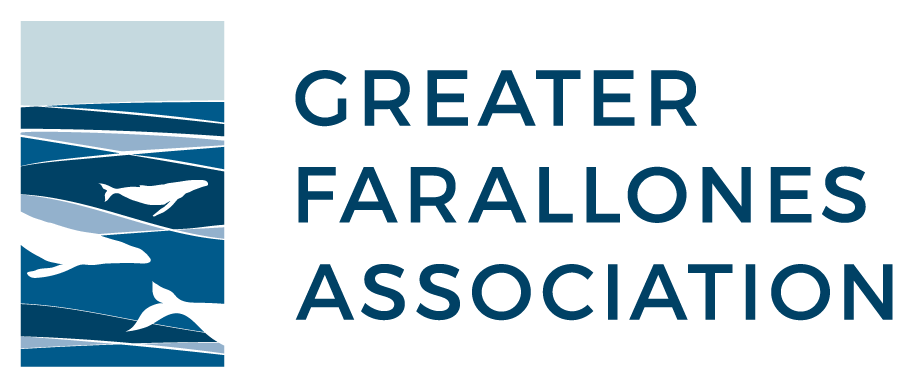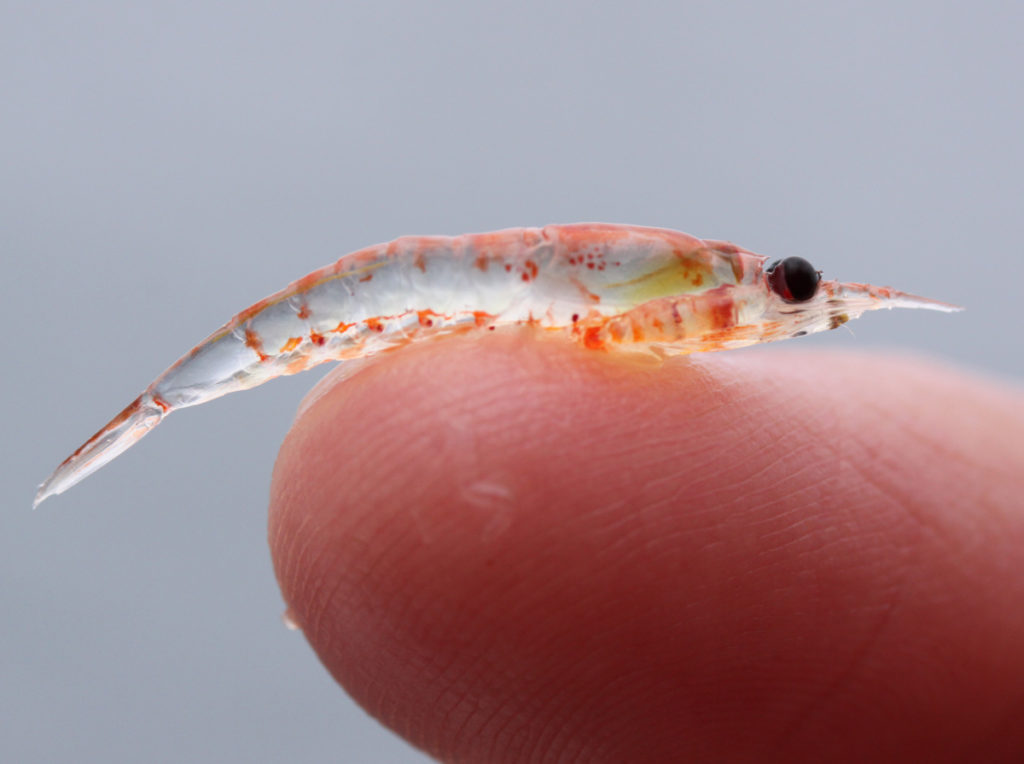These tiny crustaceans play a big role in the ocean food web as both consumer and prey. They feed on phytoplankton, or microscopic algae, and are in turn a major food source for many marine animals including whales, seals, squids, seabirds, and fish. This places krill in the important position of transferring large amounts of energy up the food chain.
Krill travel in large swarms near the ocean’s surface. So while they may be small in size, in large amounts, they feed large animals. In fact, the largest animal to ever live, the blue whale, feeds almost exclusively on krill. Blue whales have been known to eat up to 8,000 pounds of krill per day during peak feeding times!
Krill can be found in all of the world’s oceans, but one species—Pacific krill (Euphausia pacifica)—is most common and abundant in the Greater Farallones National Marine Sanctuary and along the California coast. Pacific krill are strong vertical migrators, descending as far as 1,300 feet during the day and swarming at the surface at night. During the ocean upwelling season, from March to August, the population peaks, luring whales and other marine life to feed.


